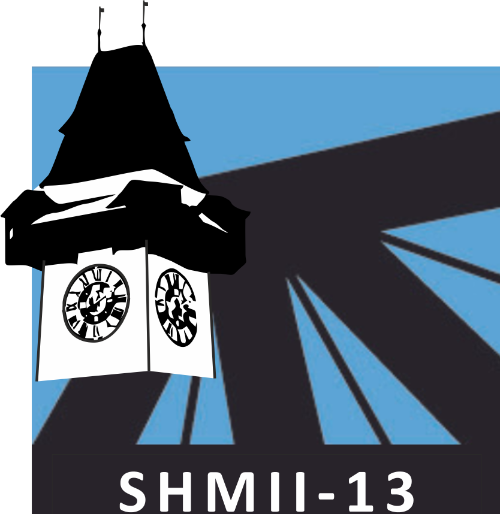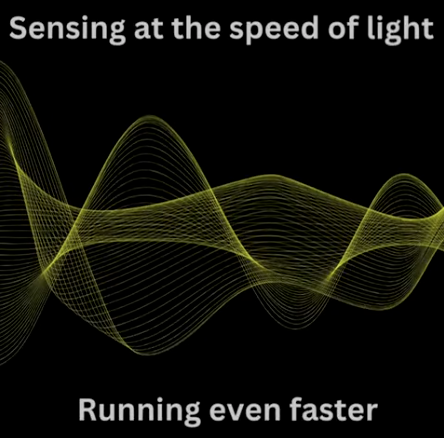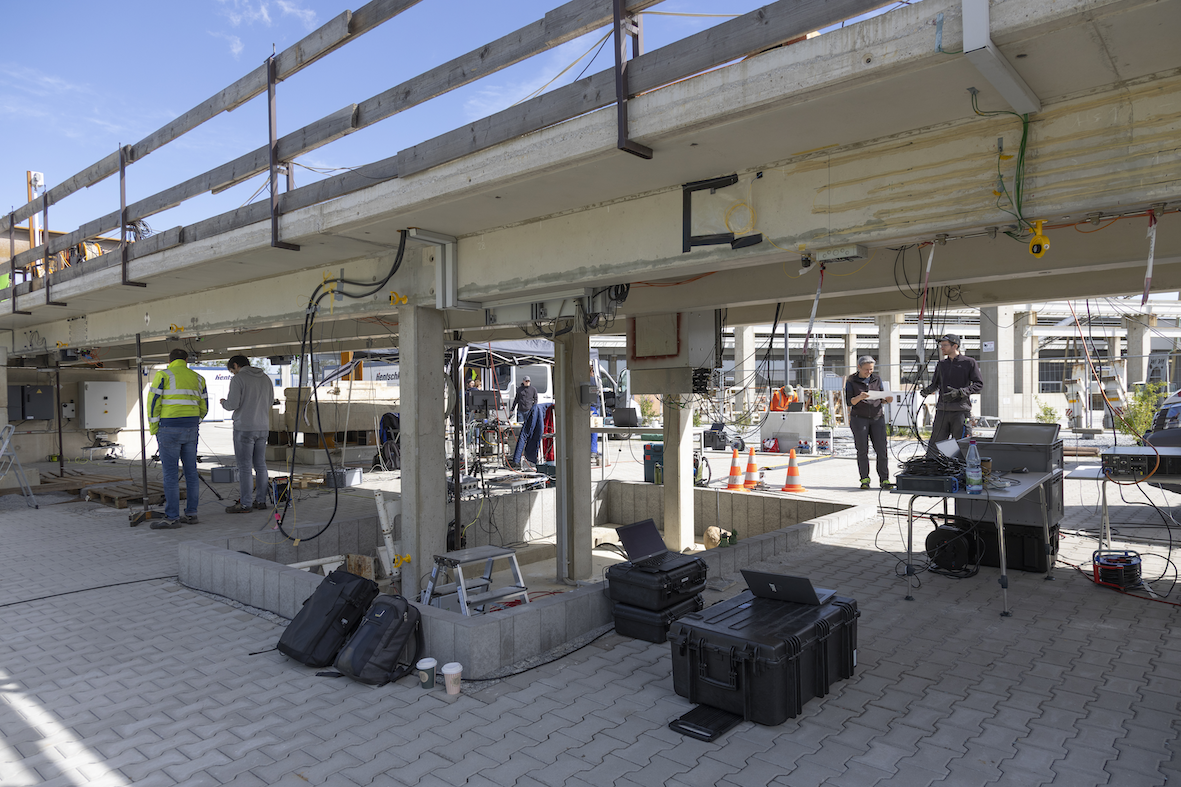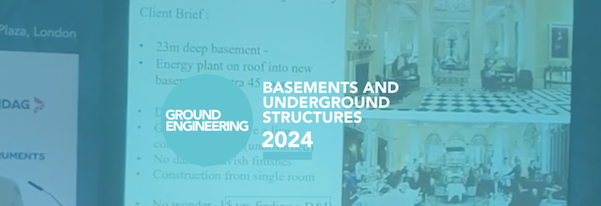


Time flies! It’s already two years since the British Geotechnical Association (BGA) Geo-resilience conference we attended in Cardiff.
This year, the theme is Earthworks. fibrisTerre will be there, with a stand. So, come and say ‘Hello!’
Abstract submissions for the conference have been submitted under the following primary themes:
*Design of modern earthworks
*Behaviour of engineered geo-materials
*Specification of earthworks and contract documentation
*Compaction and testing methods
*Treatment and stabilisation of earthworks
*Monitoring of earthworks and risk management
*Advances in plant and earthworks construction technology
*The impact of earthworks on society
*Case histories and the use of earthwork trials
*Building resilient and sustainable earthworks

fibrisTerre is delighted to sponsor the International Conference on Structural Health Monitoring of Intelligent Infrastructure of the Society for Civil Structural Health Monitoring (SCSHM, formerly ISHMII)
In Graz, Austria, from Sept. 1 – Sept. 5 2025 .
The event provides a platform for international scientists, engineers, entrepreneurs, researchers, experts of public agencies, infrastructure owners, and technical associations to discuss recent advances in structural health monitoring (SHM) of intelligent infrastructure and to explore the potential for international cooperation.
Topics include: innovative ideas on the state-of-the-art, state-of-the-practice and future trends of smart sensors, advanced sensor networks, signal processing and real-time data management, structural health diagnosis and prognosis, and life-cycle performance assessment for structural health monitoring of all types of civil infrastructure, including bridges, water dams, tunnels, retaining walls, road and railway networks, high rise buildings etc.

Congratulations to the well-deserving winners of the Ground Engineering Magazine Awards in June.
fibrisTerre wasn’t among them. So why are we happy?
Four reasons:
1. We celebrated a great collaboration with Network Rail and Senceive, tackling the challenge of rapidly detecting and locating rockfall along transport routes.
Huge thanks to the project team: Derek Butcher, Massimo Facchini, Bridie Grimes, Dom Kisz, Nils Nöther and James Taylor for their unwavering engagement!
2. We made and renewed valuable connections — even if we didn’t manage to see everyone we hoped to (900 attendees is a big crowd!).
3. We showcased the power of distributed fiber optic sensing and its relevance across industries.
4. We have an incredible team in Berlin, and elsewhere. Thank you for making fibrisTerre what it is.
Here’s to continuing the journey — and to future wins of all kinds.
Thank you to Network Rail for funding and leading the project, Geobrugg for finding the site, and Toggenburger Unternehmungen for access to their facilities.

fibrisTerre took part in the 5 × 5 TEAM STAFFEL in its hometown of Berlin.
The team achieved a commendable average running speed of 0.00278 km/second.
So, we didn’t quite achieve the measurement speed of our instruments.
Congratulations to our running and support teams!
A quick glimpse of the day:

fibrisTerre is delighted to be a Sponsor of the 11 th International Course on Geotechnical and Structural Monitoring in Poppi starting June 23.
The lessons will cover the design of a monitoring program, monitoring sensors and system installation, data acquisition and management, and the process of translating data into actionable information.
The event also includes group work on various topics (e.g., dams, linear infrastructures, natural hazards) and a visit to the experimental and permanent monitoring site for the Poggio Baldi landslide, one of the largest rock and debris landslides in the Emilia-Romagna Apennines.

This bridge has it all! An infrastructure asset owner’s dream, all packed into 45 m and 4.5 m wide, managed by scientists.
It is the brainchild of the Infrastructure Data Analysis with Artificial Intelligence (IDA-KI) research project, which aims to develop methods for the automated analysis and evaluation of monitoring data.
The bridge has a rail-guided load vehicle. Hydraulic presses and a load traverse apply force for static load tests. Thanks to a ‘shaker’ mechanism, its dynamic structural behavior in different frequency ranges can be investigated.
Let’s talk monitoring: air temperature, relative humidity, solar radiation, and precipitation are recorded. There are strain gauges, inductive displacement transducers, an accelerator sensor, and Distributed Fiber Optic Sensing (DFOS).
About 1.5 km of sensing fibers are installed in the pre-cast elements and in situ. They record strain and temperature, providing ‘the nerves of the structure’.
The high-frequency monitoring data is incorporated into the associated BIM model.
Real-time visualization of both raw sensor readings and aggregated system status are available via a browser. Threshold-based alarms can be automatically triggered to flag anomalies or critical conditions.
The project is funded by the Federal Ministry of Digital and Transport (BMDV) as part of the mFUND research initiative.
Find out more here from the TU Dresden Institute of Concrete Structures

fibrisTerre collaborated with Network Rail and Senceive in the U.K. to provide event detection and location for a robust, comprehensive automated rockfall warning solution.
fibrisTerre’s distributed fiber optic sensing system, integrated into a catch fence, provides rapid detection and location of rockfall events, and can monitor over many kilometers. Initial tests were completed in Switzerland.
The benefits of detecting and locating rockfall remotely, in real time, allow for rapid mitigation. For example, knowing the exact location of the event, response crews can be dispatched precisely where they are needed, ensuring a swift and efficient response.
The system is shortlisted in the Award for Equipment Innovation category.

Initial lessons learned, key challenges, and how these were overcome on a first-of-a-kind project to monitor both piles and connecting rafts over at least two years:
“If you cannot measure, you cannot improve. Learning from real-time monitoring of piled raft foundations in a deep basement in London”
will be presented during Ground Engineering Magazine’s Basements and Underground Structures event on October 3 by:
*Dr. Dimitrios Selemetas, Technical Director, AKT II,
*Will Argent Geotechnical Design Engineer, AKT II,
*Adrian Bywaters Operations Director-Engineering, Mace and
*Dr. Nicky de Battista, Director, Epsimon Ltd.
The Conference is colocated with Smart Geotechnics.
Conference link

Salerno, Italy 4-6 September, is the place to be for Smart Monitoring, Assessment and Rehabilitation of civil structure, co-organised by the Structural Engineering Laboratory of Empa, the Swiss Federal Laboratories for Materials Science and Technology, and the Department of Civil Engineering of the University of Salerno, Italy.
MS09/1 and 2 (sessions 3G and 4G)are Mini Symposia on Advances in Fiber Optical Sensing Solutions for Infrastructure, Geotechnics and Earth Sciences.
Covering applications in soil stabilisation, landslides, water pipelines, boreholes, subsidence, bridges, tunnels, and rail displacement, presentations highlight the latest advances in monitoring with distributed fiber optic strain sensing.
fibrisTerre is presenting:
“Distributed Fiber Optic Smart Geosynthetics for Geotechnical Applications in Transportation”
Massimo Facchini, Nils Nöther, Léon Neff on
September 5, Session 4-G MS09/2 Advances in Fiber Optical Sensing Solutions for Infrastructure, Geotechnics and Earth Sciences
“We present the latest works in the design, development, validation and industrial application of geosynthetic materials equipped with integrated fiber-optic sensing cables for distributed strain and temperature measurements. The integration of fiber-optic sensors into geotextiles and geogrids – as they are commonly used in geotechnical construction for soil stability improvement, erosion protection, draining, filtering and other tasks – provides a feasible integration method for the sensors into the structure under monitoring. The one-dimensional characteristic of a longitudinal fiber-optic strain sensor is thereby transformed into a two-dimensional shape sensing plane, providing distributed, uninterrupted information on deformation, sinkholes, slope movements, settlements and many more geotechnical indications on structural failure.”
Full papers will be collected in the
Conference Proceedings, which are going to be published by Elsevier in a dedicated issue of Procedia Structural Integrity (Online ISSN: 2452 – 3216), an open access journal publishing under a CC – BY – NC – ND license full papers presented in scientific conferences.
We look forward to meeting you in Salerno!

‘Challenges of Geotechnical Engineering to meet current and emerging society needs’ is the theme of the upcoming conference in Lisbon, Portugal, August 26-30th
We look forward to welcoming you on stand 76 and would love to hear about your project and how you plan to monitor structural deformation, strain or displacement – during construction and in operation.
Distributed fiber optic sensing offers reliable, precise and cost-effective monitoring offering:Want to know more or share a fiber optic monitoring experience experience? Visit fibrisTerre on stand 76!
Meet us on Monday 26 at the ISSMGE CAPG from 18.00
Thank you to the Portuguese Geotechnical Society (SPG) for hosting the event.